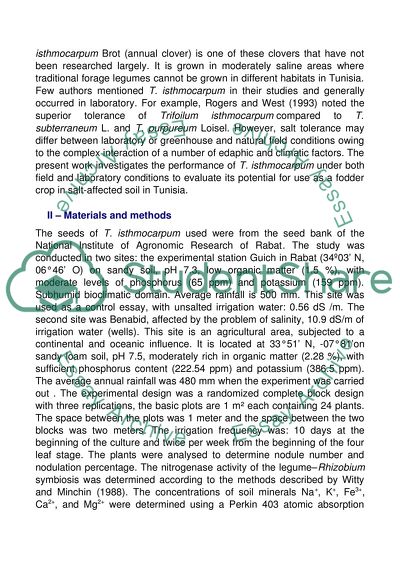Cite this document
(Trifolium Isthmocarpum Brot: Bio Saline Agriculture for Forage and Research Paper Example | Topics and Well Written Essays - 1250 words, n.d.)
Trifolium Isthmocarpum Brot: Bio Saline Agriculture for Forage and Research Paper Example | Topics and Well Written Essays - 1250 words. https://studentshare.org/biology/1818149-trifolium-isthmocarpum
Trifolium Isthmocarpum Brot: Bio Saline Agriculture for Forage and Research Paper Example | Topics and Well Written Essays - 1250 words. https://studentshare.org/biology/1818149-trifolium-isthmocarpum
(Trifolium Isthmocarpum Brot: Bio Saline Agriculture for Forage and Research Paper Example | Topics and Well Written Essays - 1250 Words)
Trifolium Isthmocarpum Brot: Bio Saline Agriculture for Forage and Research Paper Example | Topics and Well Written Essays - 1250 Words. https://studentshare.org/biology/1818149-trifolium-isthmocarpum.
Trifolium Isthmocarpum Brot: Bio Saline Agriculture for Forage and Research Paper Example | Topics and Well Written Essays - 1250 Words. https://studentshare.org/biology/1818149-trifolium-isthmocarpum.
“Trifolium Isthmocarpum Brot: Bio Saline Agriculture for Forage and Research Paper Example | Topics and Well Written Essays - 1250 Words”. https://studentshare.org/biology/1818149-trifolium-isthmocarpum.


